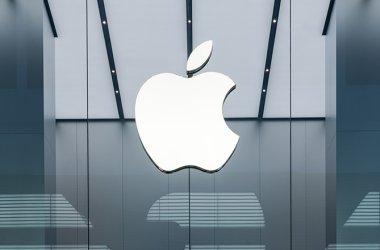 Google last week again turned the screws on Microsoft and its Office franchise, this time by including Quickoffice with its newest Android mobile operating system, version 4.4 and dubbed “KitKat.”
Google last week again turned the screws on Microsoft and its Office franchise, this time by including Quickoffice with its newest Android mobile operating system, version 4.4 and dubbed “KitKat.”
As of KitKat, Google is including Quickoffice, a Microsoft Office substitute, with new devices running the OS, as well as with Android 4.4 upgrades for already-owned smartphones and tablets.
Analysts interpreted Google’s previous moves with Quickoffice as strategically aimed at Microsoft, Office in particular. While Office has a lock on the business market, the proliferation of mobile devices – those in consumers’ and workers’ hands – does not guarantee that position can be maintained.
They viewed KitKat as more of the same.
“I think this is definitely an escalation,” said Al Hilwa of IDC, who has been closely following Google’s Quickoffice moves. “Having apps built into OS distributions is huge in the long run, in whether people will pay for other packages. This is certainly going to be the case on smartphones and possibly tablets, where most of the usage of the Microsoft Office-compatible category is in browsing [documents] and not really modifying documents.”
Google bought Quickoffice in June 2012, and began expanding the app’s distribution within months. Last December, the company offered a free iPad-specific version to Google Apps for Business customers. In April, Google expanded the deal when it launched an iPhone version and others for Android smartphones and tablets, again free to Google Apps for Business accounts.
Google Apps for Business is a cloud-based suite that costs $50 per user per year, and is the Mountain View, Calif. company’s lynchpin in its quest for enterprise productivity customers.
Then six weeks ago, Google made its biggest Quickoffice move by offering the app to iOS and Android users free-of-charge, doing away with the Apps for Business link.
KitKat, however, goes one step further by including Quickoffice, removing the download barrier entirely, at least on Android. Quickoffice thus becomes a first-party app, just like Google Maps.
Neither Quickoffice or Apple’s iWork suite — the latter is now free to buyers of new iOS and OS X hardware — can compete with Microsoft Office on features or document fidelity. But they don’t have to, analysts have said.
“Every day Microsoft waits, Office market share erodes. People will learn to stick with the other stuff,” Hilwa said in September when Google took Quickoffice free for iOS and Android.
Many have argued that as-is Office is unassailable in the enterprise. Recently, for example, Forrester Research surveyed companies already using Office and found that only 16% believed iOS and Android apps from Microsoft were important. And Wes Miller, an analyst with Directions on Microsoft, an independent research firm that focuses on the Redmond, Wash. company, has gone on record saying, “Nothing will ever replace Microsoft Office … at least for the time being for a huge chunk of business users.”
Yet that leaves other customer segments open to attack. Most in danger from inroads by Google and Apple, experts have contended, are Office sales to consumers and small businesses, where the full-fledged Office can be overkill.
“I see Google’s strategy as Occasional vs. Professional,” said Jack Gold of J. Gold Associates in an email today. “Those that are heavy Office users will still want Office…, [for which there is] no substitute. Those that are only occasional users with more modest needs, of which there are many, will be okay with Quickoffice.”
Other analysts have looked differently at rivals’ game plans. Two weeks ago, when Apple announced that iWork would be available for free download by new iOS device owners, Patrick Moorhead, principal analyst at Moor Insights & Strategy, saw some psychological warfare lurking in Apple’s motivation.
“Free alternatives to Office have been available for 20 years, but this time, it’s different,” said Moorhead in a piece on Techpinions after Apple’s announcement. “PC software that costs a lot of money looks odd when compared to low-cost mobile and freemium models. Over time, I believe buyers will be less likely to pay as much as they do today for PC software, [and] look more closely at the alternatives. This creates a big challenge for Microsoft.”
Today, Hilwa said as much about Google’s plan when he pointed out that with Quickoffice now a part of Android, most users would not even bother to look for alternatives. That’s a well-worn tactic by other operating system makers, whether Microsoft and the inclusion of Internet Explorer with Windows, or Apple and its built-in Calendar app within iOS and OS X.
Because Google and Apple hinge on revenue streams at odds with Microsoft’s continued reliance on software sales, they can afford to give away software. Microsoft and its shareholders, however, would find that impossible to swallow, which was what Moorhead meant when he said the Redmond, Wash. company faces a big challenge.
So far, the company’s mobile strategy for Office has reflected its need to monetise Office on mobile. While it offers free Web-based versions of Office’s core applications, the native iPhone and Android apps must be linked to an active Office 365 account, which starts at $100 per year for consumers, and climbs to between $150 and $264 per user per year for businesses.
Most expect Microsoft to rerun that when it eventually releases Office for Apple’s iPad, which should appear at some point after Redmond ships a reworked Office designed specifically for touch on Windows 8.1.
But not everyone.
“I think, eventually, Microsoft will have to release native [Office] software,” said Ross Rubin of Reticle Research, without tying the mobile app or apps to Office 365. “Maybe they’d even release a free, or very low price app, competitive with Quickoffice and iWork, then offer in-app purchases for additional functionality.”
Another option perhaps up Microsoft’s sleeve, said Rubin, was to fork Office, offer one mobile version at little or no cost, but charge for a fuller-featured app. Even then, however, Microsoft faces unfamiliar constraints. “It’s difficult to see [Office on mobile] commanding even a $59 price,” Rubin said, pointing to the lower prices for smartphone and tablet apps, and the trend away from paid apps in general.
Microsoft, however, has scoffed at the idea that Apple’s iWork, and by extension, any alternative, including Google’s Quickoffice, is in any way competitive with Office.
“When I see Apple drop the price of their struggling, lightweight productivity apps, I don’t see a shot across our bow, I see an attempt to play catch-up,” said Frank Shaw, the head of Microsoft’s corporate communications, in a blog post. “We literally wrote the book on getting things done.”





